If you bet on the honey you’re a winner. The Barley Browis was a savory, pilaf-like side dish for our feast, but the Glazed Carrots and Parsnips were sautéed in butter and glazed with, you guessed it, honey.
Day 1: Go to your beehives and collect lots of honey. Just kidding.
With so much sweet in the meal, not just the honey as an ingredient but the sweetness of the carrots in many of the dishes, the barley dish needed to be totally savory. So while there is a suggestion to add any number of vegetables to the browis (which would have been the norm – use whatcha got) I went with leeks, onion, and beef broth for a heartier taste. Browis could have been eaten like a stew, soupy with any left over meat of vegetables thrown in, but I cooked it down to the consistency of oatmeal. Barley has a good chew to it even when cooked down, and it worked well with the rest of the dishes in the mix.
The tasters, unbeknownst to me, were all barley fans, so the Browis was a hit. A couple said they were going to make the recipe vs. just adding barley to the occasional soup. One called it the best kind of comfort food.
So, when’s the last time you cooked a parsnip? It could be a New England thing, but we actually still do use parsnips up here. I put them in soups and stews, but they’re higher in carbs than turnips, so I use turnips for everything else. Higher Carbs = More Sugar, so they’re a good match for the carrots, especially when sautéed in butter and honey. The group decided there was much to recommend this dish, adding that the combination was what worked. Parsnips by themselves would have not been as good, and carrots would have been, well, carrots.
Click on image to view full size
If you’re interested in creating your own 9th Century Feast I’m happy to give you some advice. Do it on a weekend or when you have two days together to execute the plan. It is fun, but not if you don’t have enough time.
Day 1
Go to your beehives and collect lots of honey. Just kidding.
Make the Fish and Lentil Stew (stews like this are always better the next day)
Cook the steel cut oats
Soak the barley, drain and refrigerate
Prep all the vegetables; keep them is separate containers for ease of use on Day 2
Steep the lavender in the scalded milk, drain and refrigerate the milk
Make the Oat Griddle Cake batter and refrigerate
Make the Green Sauce and refrigerate
Make several batches of piecrust and let rest in refrigerator overnight
Set a beautiful, rustic table! Don’t forget the candles.
Day 2
Take off your rings as your hands will be getting messy, see what I did with my rings below… Tomato vines can be very helpful!
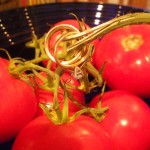
Make the Honey Cakes and bake
Use the flour on your board to roll out the dough for the Venison Pie
Make the pie and bake
While the pie bakes roll out the crusts for the baked apples
Core the apples, put them on the crust and fill with the honey, walnuts and butter, wrapping them in pie crust, and giving them a good pinch!
While they bake begin the Barley Browis
Sauté the vegetables for the Browis, and once the vegetables are added to the browis pan use the same pan to sauté the Carrots and Parsnips, par-cooking them, finishing them while the chickens are roasting
Prepare the Lavender Scented Pudding and put aside until later
Reheat the Fish and Lentil Stew
Cut slices of the Venison Pie for your guests to enjoy while you finish making the feast, it can be eaten at room temperature
When the chickens come out of the oven to rest, roast the fish and make the Oat Cakes on a griddle
Reheat the Browis and finish the Carrots and Parsnips, keep on low heat
Serve the Fish and Lentil Stew as a first course with the Oat Griddle Cakes
As the remainder of the feast makes its way to the table put the Lavender Scented Pudding in the oven, when done they will need to cool a bit before serving with the Baked Apples for dessert
Click on image to view full size
Enjoy your 9th Century Feast! It’s cheaper than tickets to Ye Olde Renaissance Fair and the food is way better!
Many thanks to Octavia Randolph for giving me the pleasure of delving into the 9th Century, honey from hell and all, and for sharing my blog with her readers. Get the complete Cookery Book(let) here at octavia.net
Sy ðu hal (may you be healthy!)

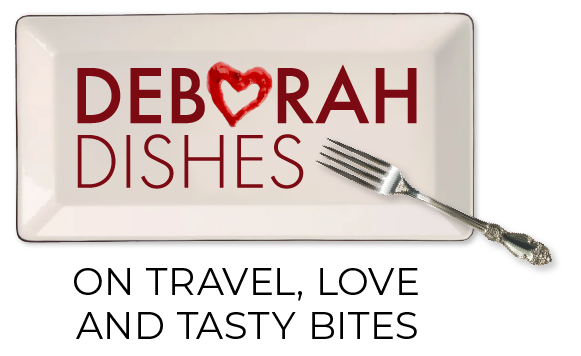




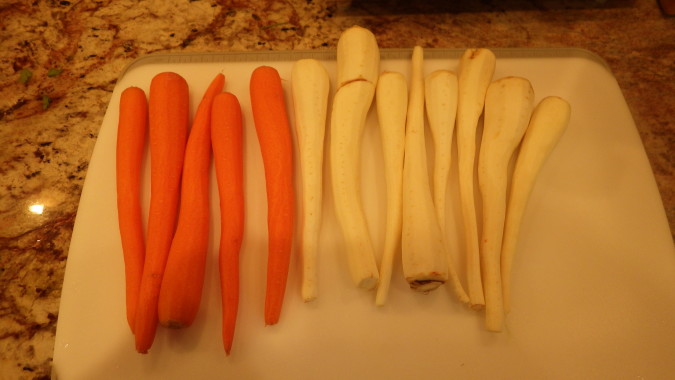
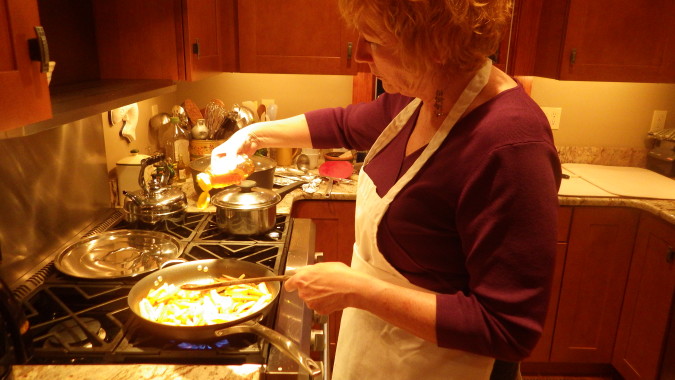




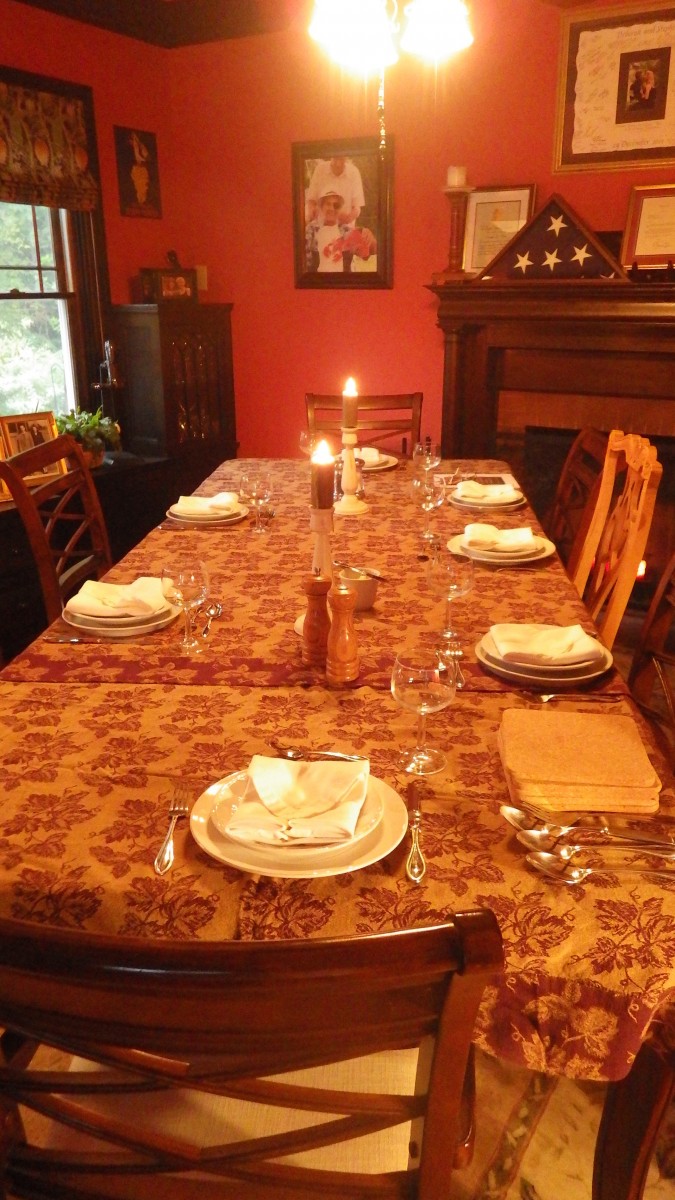

Fantastic! So beautiful! What a realization – and what an insanely valuable Scheduling list! My gratitude to all who participated, beginning with she who so willingly went to the Beehive to make these dishes into a single, grand 9th Century blow-out Feast!
This really was great fun, the preparation, the feasting AND the writing. Thank you Octavia!!
D.
Loved this series of blogs about your 9th century meal! I had no idea the food was so tasty and diverse back then. And I also like that theirs is a similar climate to ours, so it seems like much of the food could be locally sourced.
Interestingly when I asked Jinx, my history teacher friend, about sourcing food she said that travel was so dangerous that import/export was mostly impossible. The very rich and very well protected were able to get spices, but most ate only what was available in their backyard. Priors, as it turns out, were great farmers so the priories were a source of food if you were lucky enough to be near one! Thanks for writing Cheryl!
D.
Absolutely fascinating! Sounds very tasty as well. Loved all the honey, such a wonder food. Not sure I would do a whole feast anytime soon, but sure enjoyed reading about it.
Thanks Anne! So does that mean you didn’t cook a 9th Century Feast for Bob’s 70th? Tell him we wish him a happy belated birthday.
D.